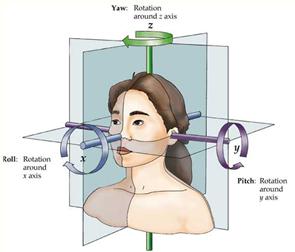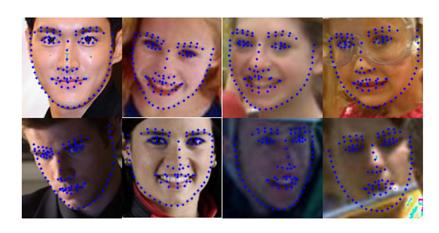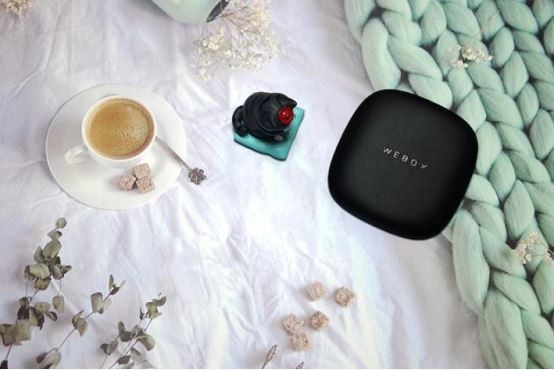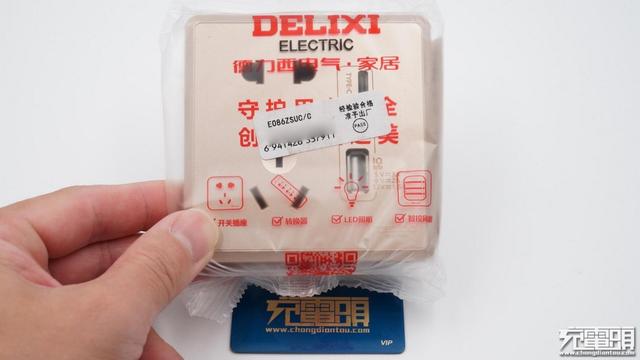赠书 | Python人脸五官姿态检测( 二 )
 文章插图
文章插图
(2)计算和绘制特征图形函数的定义:收集面部角度转换数据 , 并通过数百人的面部的旋转关键点拟合了一个简单的线性模型 。 实验表明 , 简单的数学线性点模型更加有效和准确 。
class AverageMeter(object):"""Computes and stores the average and current value"""def __init__(self):self.resetdef reset(self):self.val = 0self.avg = 0self.sum = 0self.count = 0def update(self, val, n=1):self.val = valself.sum += val * nself.count += nself.avg = self.sum / self.countdef vis_landmark(img_path, annotation, norm, point_num):"""line format: [img_name bbox_x1 bbox_y1 bbox_x2 bbox_y2 landmark_x1 landmark y1 ...]"""# check point lenassert len(line) == 1+4+point_num*2 # img_path + bbox + point_num*2img = cv2.imread(img_path)h, w = img.shape[:2]img_name = annotation[0]bbox_x1, bbox_y1, bbox_x2, bbox_y2 = annotation[1:5]landmark = annotation[5:]landmark_x = line[1+4::2]landmark_y = line[1+4+1::2]if norm:for i in range(len(landmark_x)):landmark_x[i] = landmark_x[i] * wlandmark_y[i] = landmark_y[i] * h# draw bbox and face landmarkcv2.rectangle(img, (int(bbox_x1), int(bbox_y1)), (int(bbox_x2), int(bbox_y2)), (0, 0, 255), 2)for i in range(len(landmark_x)):cv2.circle(img, (int(landmark_x[i]), int(landmark_y[i])), 2, (255, 0, 0), -1)cv2.imshow("image", img)cv2.waitKey(0)(3)网络层的定义:import torchimport torch.nn as nnimport mathdef conv_bn(inp, oup, kernel, stride, padding=1):return nn.Sequential(nn.Conv2d(inp, oup, kernel, stride, padding, bias=False),nn.BatchNorm2d(oup),nn.ReLU(inplace=True))def conv_1x1_bn(inp, oup):return nn.Sequential(nn.Conv2d(inp, oup, 1, 1, 0, bias=False),nn.BatchNorm2d(oup),nn.ReLU(inplace=True))class PFLDInference(nn.Module):def __init__(self):super(PFLDInference, self).__init__self.conv1 = nn.Conv2d(3, 64, kernel_size=3, stride=2, padding=1, bias=False)self.bn1 = nn.BatchNorm2d(64)self.relu = nn.ReLU(inplace=True)self.conv2 = nn.Conv2d(64, 64, kernel_size=3, stride=1, padding=1, bias=False)self.bn2 = nn.BatchNorm2d(64)self.relu = nn.ReLU(inplace=True)self.conv3_1 = InvertedResidual(64, 64, 2, False, 2)self.block3_2 = InvertedResidual(64, 64, 1, True, 2)self.block3_3 = InvertedResidual(64, 64, 1, True, 2)self.block3_4 = InvertedResidual(64, 64, 1, True, 2)self.block3_5 = InvertedResidual(64, 64, 1, True, 2)self.conv4_1 = InvertedResidual(64, 128, 2, False, 2)self.conv5_1 = InvertedResidual(128, 128, 1, False, 4)self.block5_2 = InvertedResidual(128, 128, 1, True, 4)self.block5_3 = InvertedResidual(128, 128, 1, True, 4)self.block5_4 = InvertedResidual(128, 128, 1, True, 4)self.block5_5 = InvertedResidual(128, 128, 1, True, 4)self.block5_6 = InvertedResidual(128, 128, 1, True, 4)self.conv6_1 = InvertedResidual(128, 16, 1, False, 2) # [16, 14, 14]self.conv7 = conv_bn(16, 32, 3, 2) # [32, 7, 7]self.conv8 = nn.Conv2d(32, 128, 7, 1, 0) # [128, 1, 1]self.bn8 = nn.BatchNorm2d(128)self.avg_pool1 = nn.AvgPool2d(14)self.avg_pool2 = nn.AvgPool2d(7)self.fc = nn.Linear(176, 196) 文章插图
文章插图
推荐阅读
- 计算机专业大一下学期,该选择学习Java还是Python
- 想自学Python来开发爬虫,需要按照哪几个阶段制定学习计划
- 未来想进入AI领域,该学习Python还是Java大数据开发
- 识别|不摘口罩也能识别人脸?伊朗推出新型智能摄像头加强治安
- 人脸识别设备主板如何选型 软硬整合大幅缩短开发时间
- 2021年Java和Python的应用趋势会有什么变化?
- 非计算机专业的本科生,想利用寒假学习Python,该怎么入手
- 用Python制作图片验证码,这三行代码完事儿
- 历时 1 个月,做了 10 个 Python 可视化动图,用心且精美...
- 为何在人工智能研发领域Python应用比较多
















